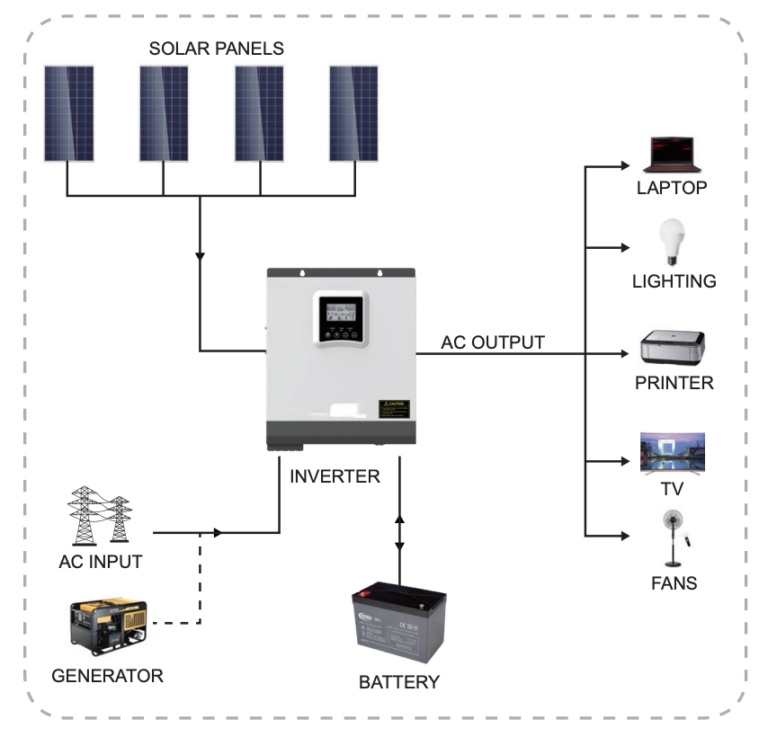For larger energy storage systems or industrial applications, connecting lithium batteries to inverters involves advanced considerations. This article addresses key factors for complex setups, such as battery capacity, system voltage, and communication interfaces.
1. Battery Voltage and Capacity
When designing a larger energy system, matching the voltage of the battery bank to the inverter’s input voltage is critical. For instance, multiple lithium batteries may be connected in series to increase the voltage or in parallel to increase capacity.
- Series Connection: Increases the total voltage (e.g., four 12V batteries connected in series will provide 48V).
- Parallel Connection: Increases the overall capacity, allowing the system to store more energy (e.g., connecting four 100Ah batteries in parallel results in a 400Ah battery bank).
Ensure the inverter’s input voltage range is compatible with the total voltage of the battery bank.
2. Balancing Loads
When using a high-capacity system, it’s important to balance the load across the batteries to avoid overloading any single unit. A battery balancer or active balancing system helps ensure uniform charging and discharging across all batteries in the system.
3. Advanced Communication Between BMS and Inverter
In advanced setups, the inverter communicates with the Battery Management System (BMS) using protocols like CAN, RS485, or Modbus. This communication allows real-time monitoring of battery health, charging status, and error conditions. Select an inverter with advanced BMS communication capabilities for large, complex systems to ensure safety and efficiency.
4. Cooling and Ventilation
Lithium batteries can heat up during high current discharges, so ensure the system has adequate cooling or ventilation. This is especially important in large setups where multiple batteries are used, as overheating can lead to reduced battery life or system failure.
5. Monitoring and Maintenance
Modern inverters and battery systems offer remote monitoring capabilities. Use the inverter’s display or connect it to a monitoring platform to track energy production, consumption, battery health, and system efficiency. Regular monitoring helps detect issues early and ensures long-term reliability.
6. Professional Installation
For large systems or installations in critical environments, professional assistance is recommended. This ensures the system complies with local codes and regulations, as well as optimized performance and safety.


